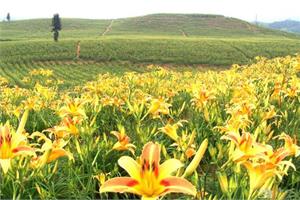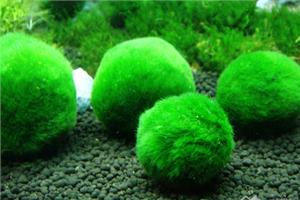Basic information of ground cucumber how to plant cucumber well
Many friends now choose to start a business in their hometown. The biggest advantage in rural areas is that there is a lot of land, which is suitable for growing crops. So what we are going to introduce to you today is the cultivation of ground cucumbers, which are actually cucumbers that do not need to build shelves.

1. Basic information of ground cucumber
Ground cucumber, perennial herb, with long taproot. Stem ca. 20 cm tall, obliquely upward or oblique. Leaves triangular-cordate or subrounded-heart-shaped, 1-6 m long and 1-4 m wide, apex acute or rounded, base heart-shaped, margin serrate, tooth tip glandular, brown dots on both surfaces, glabrous; stipules linear-lanceolate. Margin pectinate; stem base usually with persistent stipules; root.
The petiole of the leaf is longer, the cauline leaf is gradually upward and the petiole is shorter. Pedicel drawn from root or branched by stem, 6-10 cm long; flowers lavender, ca. 2 cm in diam., sepals 5, green, lanceolate, Jilang appendage semicircular; petals 5, narrowly long, brown-spotted, lower one spur, long saccate slightly curved; stamens 5; ovary superior, stigma apical, slightly curved, undivided. Capsule, glabrous. The florescence is April.
2. Planting techniques of Cucumber in soil
Frameless cucumber, commonly known as "ground roller" cucumber, does not need to build a frame, pruning, precocious, cold resistance, disease resistance. It has short internodes, many branches, strong natural capping and high yield, so it is suitable for open field or plastic film mulching cultivation in early spring. The main points of cultivation are as follows:
1. Variety selection
Xx "ground roller" cucumber is selected, which has a long history, mature technology and good adaptability to xx climate and soil.
2. Sowing and raising seedlings
Sprouting: mix carbendazim with lukewarm water according to 1RU 800, soak the seeds for 5-8 hours, pick them up, wash them, wrap them in a wet cloth, germinate at 30 ℃, keep the seeds humid, and sow the seeds after breaking the shell.
Sowing: use sterilized substrate to raise seedlings in greenhouse or greenhouse, select 50-hole seedling tray, sow 2-3 seeds in each hole, pour water after sowing, and then cover it with film. The open field was heated by fire path, covered with plastic film, covered with arch shed and insulated by grass curtain at night to raise seedlings.
3. Seedbed management
The temperature should be controlled at 25-28 ℃ in daytime and 12-15 ℃ at night to prevent overgrowth when the temperature is too high. Regularly observe the dry humidity of the seedbed and water as little as possible to avoid excessive temperature and humidity and cause seedling diseases. In the later sunny day, we should strengthen ventilation and cultivate strong and healthy seedlings.
4. Seedling initiation and planting
Cucumber needs a large amount of fertilizer, which needs to be re-applied with rotten organic fertilizer, bio-organic fertilizer, phosphate fertilizer and potash fertilizer per mu. 3000 mu of rotten organic fertilizer, 150,200 mu of bio-organic fertilizer, 20% phosphate fertilizer and 15% potassium fertilizer. The seedlings can be transplanted into the field when the two leaves are in one heart, and the seedling bed can be watered thoroughly the night before transplanting, which is convenient for seedling transplanting. It was cultivated with plastic film mulching, double rows and double plants, dwarf arch and double plastic film mulching.
The ridge box is 60 inches wide and 20 inches high, with double rows and double plants, "T-shaped" planting, plant spacing of 35-40 inches, row spacing of 40 inches, and fixed root water after planting. The middle trench of 140 inches apart is drained, with a width of 30 inches and a depth of 20 inches.
5. Field management
According to the growth situation, we should pick the heart and top, control the top dominance, and remove the old leaves, yellow leaves and tendrils in the lower part of the plant in time, so as to reduce nutrient consumption, promote the centralized distribution of nutrients, and be beneficial to the formation of female flowers and the expansion of fruits. Apply thin fertilizer frequently and water at the right time when entering the melon-bearing period. During the peak period, when the temperature rises, a large amount of water is needed, and water is irrigated every 2-3 days to promote the rapid expansion of young melons.
According to the principles of weeding and weeding, disease prevention and early prevention, giving priority to prevention and treatment as auxiliary, timely removal of weeds in the field, prevention of diseases and insect pests, little or no pesticides as far as possible, and the combination of physical control and biological control to ensure the quality and safety of agricultural products.
6. Timely harvest
Generally to melon length 15-20cm, bright skin color, melon strips straight, melon stalks with flowers as the harvest time. Root melon should be harvested early, especially the root melon with weak plant should be harvested early, while the root melon with strong plant growth, there is no sitting melon plant in the upper part, the harvest of root melon is delayed, melon seedling is restrained, and overgrowth is prevented. When entering the peak melon period, we should harvest early at the right time, and replenish water and fertilizer in time to ensure a good harvest.
The above is the relevant introduction of this article, I believe you have a simple understanding of this after reading it, if necessary, you can continue to pay attention to the No. 1 home network for more information.
Related
- Wuhan Hospital Iron Tree Blooming Result Was Instantly Frightened by the Gardener Master
- Which variety of camellia is the most fragrant and best? Which one do you like best?
- What is the small blue coat, the breeding methods and matters needing attention of the succulent plant
- Dormancy time and maintenance management of succulent plants during dormancy
- Minas succulent how to raise, Minas succulent plant pictures
- What are the varieties of winter succulent plants
- How to raise succulent plants in twelve rolls? let's take a look at some experience of breeding twelve rolls.
- Attention should be paid to water control for succulent plants during dormant period (winter and summer)
- Watering experience of twelve rolls of succulent plants
- Techniques for fertilizing succulent plants. An article will let you know how to fertilize succulent plants.



